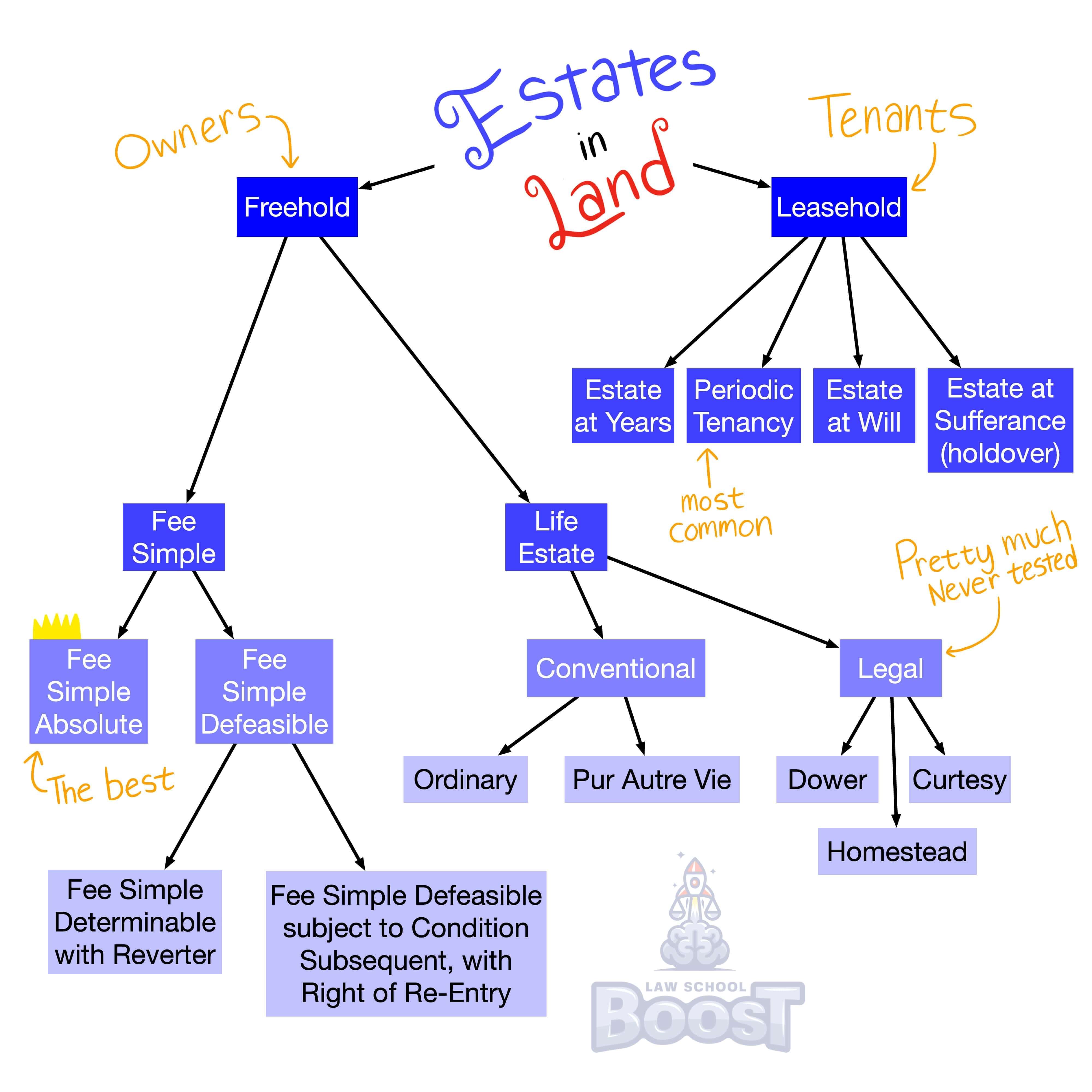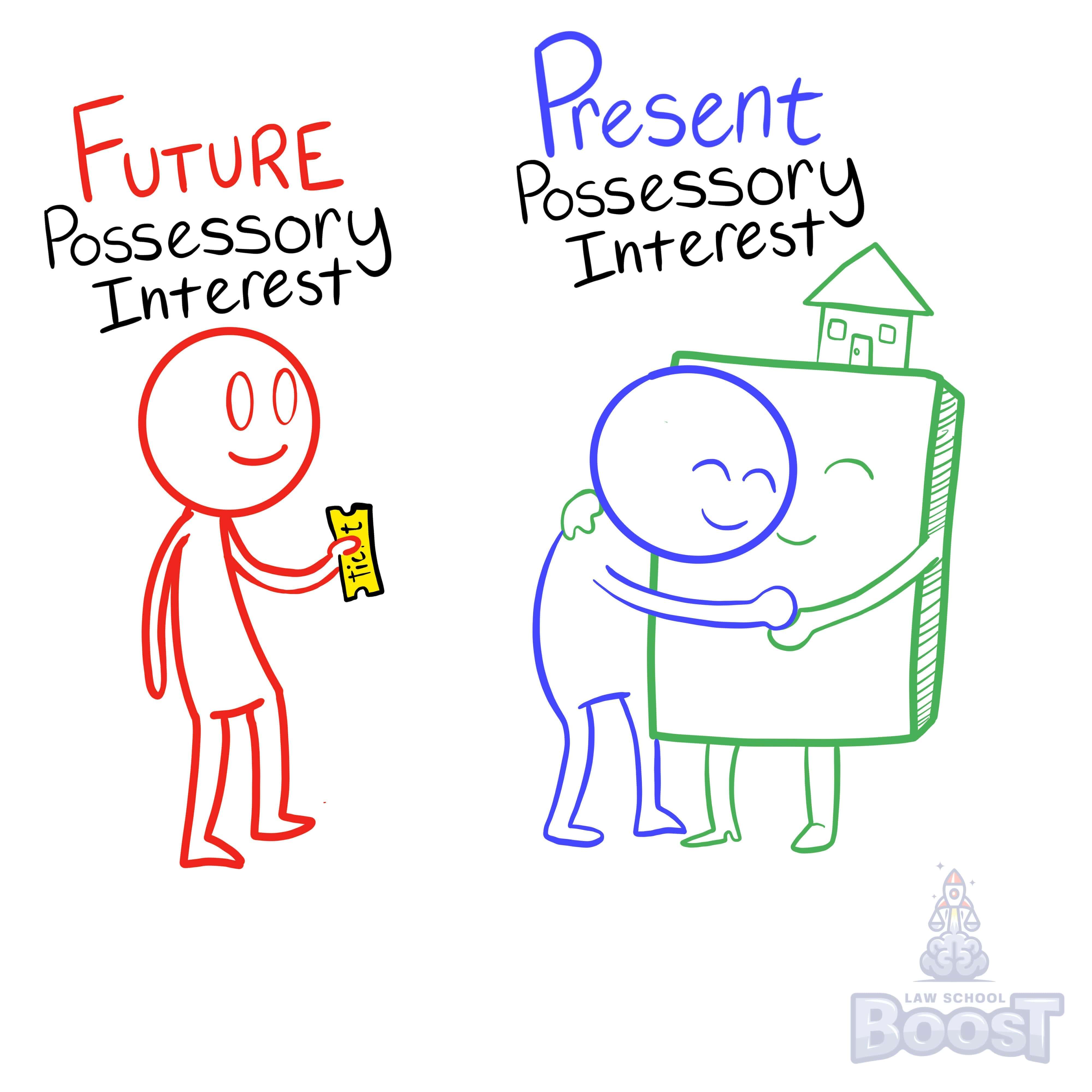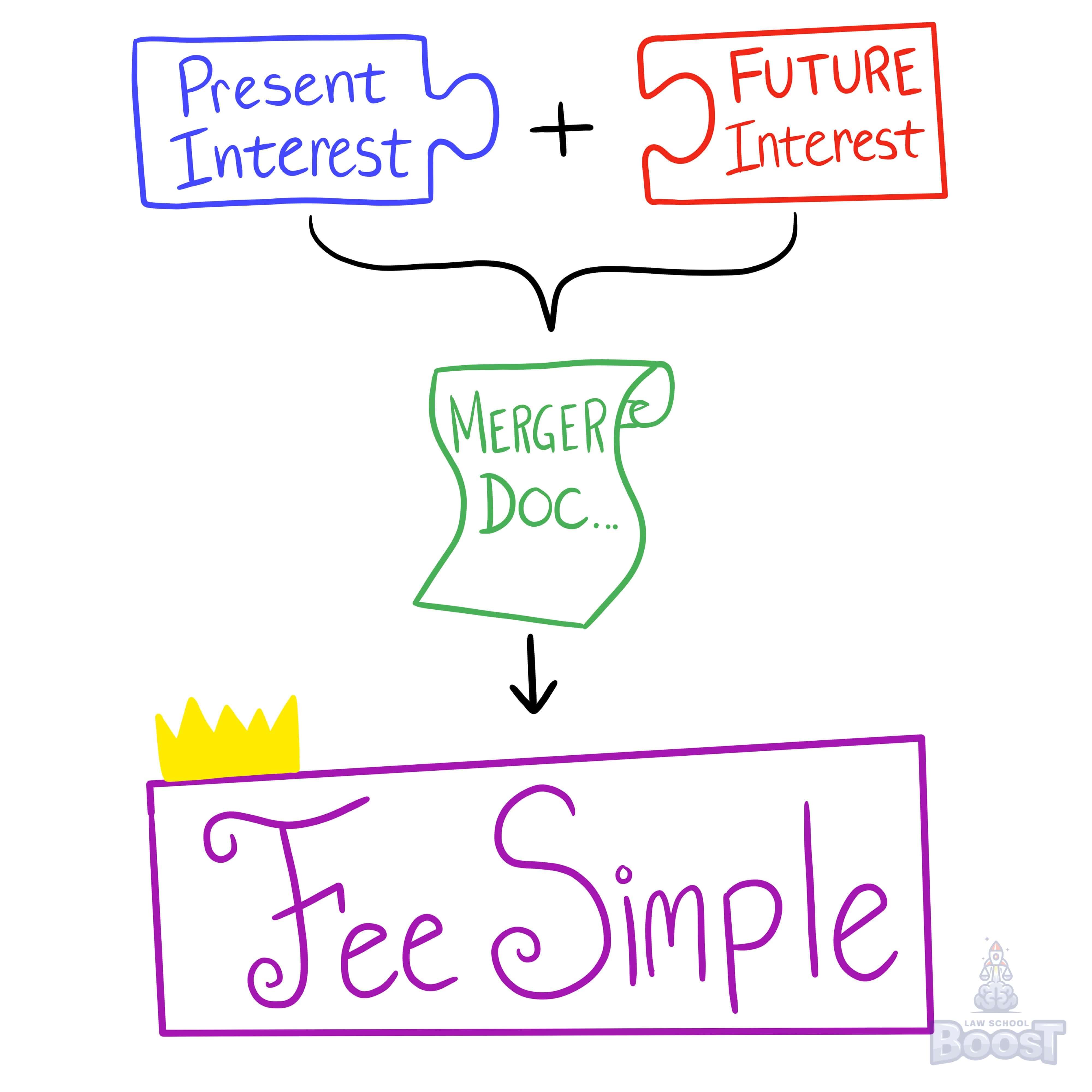😀
Real Property • Future Interests
PROP#024
Legal Definition
Under common law, when a person acquires all the present and future interests in land except a contingent remainder, the contingent remainder is destroyed. However, if the interests were all created in the same instrument, there is no merger since merger would be expressly contrary to the grantor's intent.
Plain English Explanation
The Doctrine of Merger attempts to streamline and clarify a person's ownership of land by practically acknowledging the aggregate of their interests. In other words, if Oz conveys Blackacre to Amy as a life estate, then Amy has a present interest in the land and Oz has a future interest (the reversion) after Amy dies. But imagine if the day after Oz conveyed the life estate to Amy, he also conveyed his reversion to Amy. Now Amy has a present interest in Blackacre (the life estate) and a separate future interest in Blackacre (the reversion).
Rather than juggle these two separate interests, the Doctrine of Merger says, "Let's keep things simple and call this what it is: Amy owns Blackacre completely, in fee simple." Thus, the Doctrine of Merger merges Amy's two distinct interests into a single interest.
Rather than juggle these two separate interests, the Doctrine of Merger says, "Let's keep things simple and call this what it is: Amy owns Blackacre completely, in fee simple." Thus, the Doctrine of Merger merges Amy's two distinct interests into a single interest.
Hypothetical
Hypo 1: Oz conveyed Blackacre "to Amy for life, then to Bob's heirs." Result: Amy has a life estate. Bob isn't dead yet, so he has no heirs. Thus, Bob's heirs have a contingent remainder (contingent on Bob dying before Amy). Oz retains a reversion.
Hypo 2: Same facts as Hypo 1, but after Oz's conveyance, Oz decides he wants Blackacre back so he offers to buy Amy's life estate. Amy agrees. Amy conveys her life estate "to Oz." Result: Oz now has a life estate pur autre vie (here, the life estate exists until Amy dies). However Oz also holds a reversion in Blackacre. Thus, under common law, the Doctrine of Merger merges Oz's present interest (the life estate) with his future interest (the reversion) and wipes out the contingent remainder. In other words, Oz now has a fee simple in Blackacre, and Bob's heirs have nothing.
Hypo 2: Same facts as Hypo 1, but after Oz's conveyance, Oz decides he wants Blackacre back so he offers to buy Amy's life estate. Amy agrees. Amy conveys her life estate "to Oz." Result: Oz now has a life estate pur autre vie (here, the life estate exists until Amy dies). However Oz also holds a reversion in Blackacre. Thus, under common law, the Doctrine of Merger merges Oz's present interest (the life estate) with his future interest (the reversion) and wipes out the contingent remainder. In other words, Oz now has a fee simple in Blackacre, and Bob's heirs have nothing.
Visual Aids



Related Concepts
At common law, how was a contingent remainder destroyed?
What are future interests?
What is a class gift?
What is a contingent remainder?
What is an executory interest?
What is an indefeasibly vested remainder?
What is a remainder?
What is a shifting executory interest?
What is a springing executory interest?
What is a vested remainder subject to open?
What is a vested remainder subject to total divestment?
What is the Doctrine of Worthier Title?
What is the Rule in Shelley's Case?
What is the Rule of Convenience?


